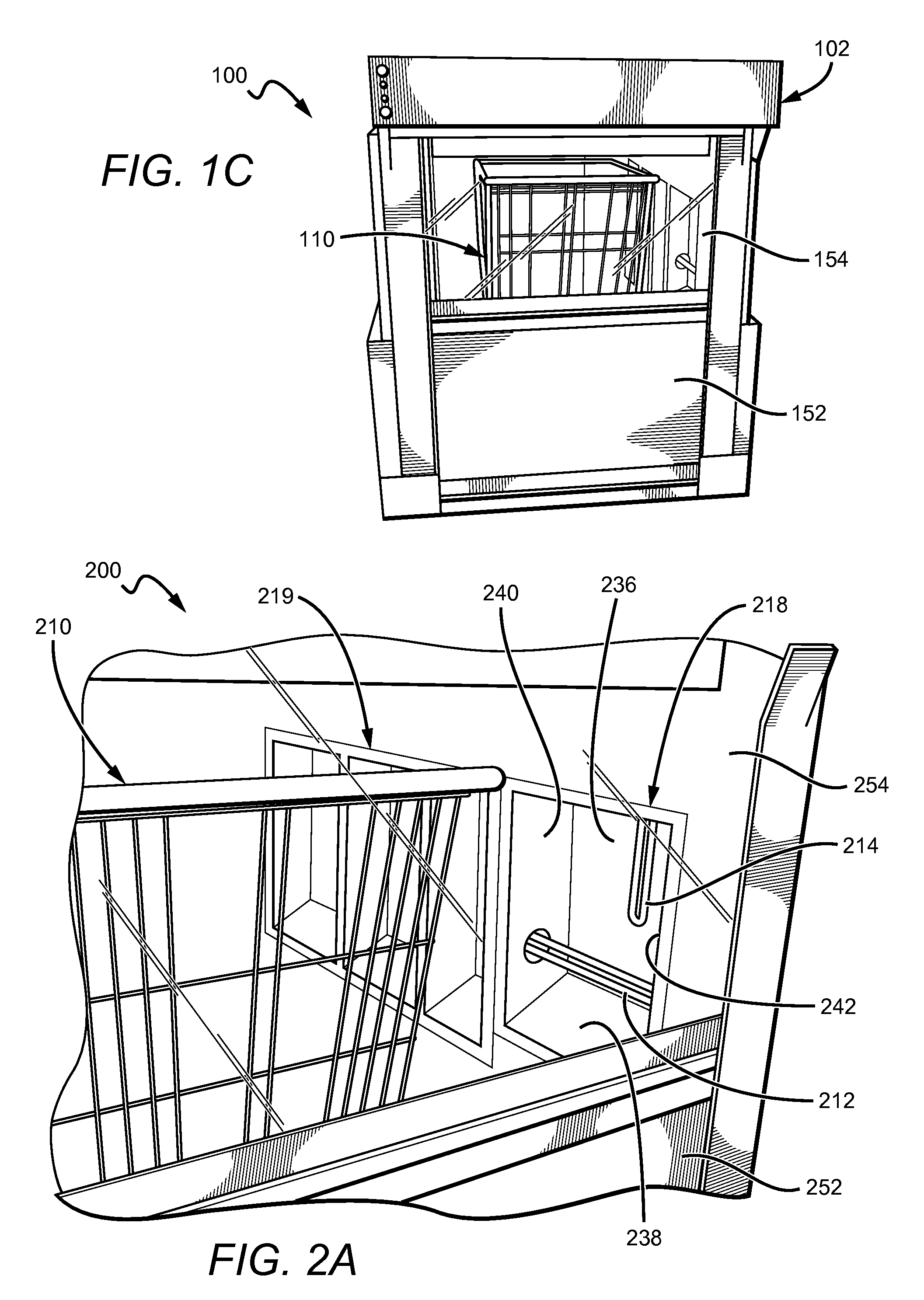Station for disinfecting publicly-used equipment
- Summary
- Abstract
- Description
- Claims
- Application Information
AI Technical Summary
Benefits of technology
Problems solved by technology
Method used
Image
Examples
examples
[0069]The following examples illustrate particular embodiments of the present inventive subject matter, and aids those of skill in the art in understanding and practicing the inventive subject matter. It is set forth for explanatory purposes only, and is not to be taken as limiting the present inventive subject matter in any manner.
example # 1
Example #1
[0070]A device was tested having six UV bulbs disposed along the ceiling of the device. The UV bulbs produced UVc light at an intensity of 110 μWs / cm2 at a distance of 1 meter. The tunnel had a height of 48 in, a depth of 29 in, and a width of 45 in.
[0071]When the UV lamps were illuminated about the tunnel, the following intensities were found using a radiometer:
[0072]
UV IntensityPortion of Shopping Cart Tested(μWs / cm2)Bottom of cart (17.5″ from floor) facing up at 5′ into unit208Bottom of cart (17.5″ from floor) facing up at 6′ into unit269Bottom of cart (17.5″ from floor) facing side of unit at37about 5′ into unitHandle bar of cart (42″ from floor) facing up at 5′ into unit128Handle bar of cart (42″ from floor) facing up at 6′ into unit694Top basket of cart (42″ from floor) facing side of unit at531about 5′ into unit
[0073]Based on the intensity measurements collected, inconsistency in the UV intensities at various areas of the shopping cart was discovered. In particular,...
example # 2
Example #2
[0074]A device was tested in which UV bulbs were disposed along the walls and ceiling of the device. The UV bulbs produced UVc light at an intensity of 110 μWs / cm2 at a distance of 1 meter. The tunnel had a height of 48 in, a depth of 29 in, and a width of 45 in.
[0075]When the UV lamps were illuminated about the tunnel, the following intensities were found using a radiometer:
[0076]
UV Intensity Portion of Shopping Cart Tested(μWs / cm2)Bottom of cart (17.5″ from floor) facing upAbout 650 Bottom of cart (17.5″ from floor) facing side of unitAbout 950 Handle bar of cart (42″ from floor) facing upAbout 1500Top basket of cart (42″ from floor) facing upAbout 2800
[0077]Based on the intensity measurements collected, it is expected that much of the cart can be substantially disinfected of many of the common microorganisms in less than seven seconds of exposure. It is expected that the entire cart could be disinfected of many of the common microorganisms in about ten seconds.
PUM
| Property | Measurement | Unit |
|---|---|---|
| Angle | aaaaa | aaaaa |
| Height | aaaaa | aaaaa |
| Surface area | aaaaa | aaaaa |
Abstract
Description
Claims
Application Information
 Login to View More
Login to View More - R&D
- Intellectual Property
- Life Sciences
- Materials
- Tech Scout
- Unparalleled Data Quality
- Higher Quality Content
- 60% Fewer Hallucinations
Browse by: Latest US Patents, China's latest patents, Technical Efficacy Thesaurus, Application Domain, Technology Topic, Popular Technical Reports.
© 2025 PatSnap. All rights reserved.Legal|Privacy policy|Modern Slavery Act Transparency Statement|Sitemap|About US| Contact US: help@patsnap.com



